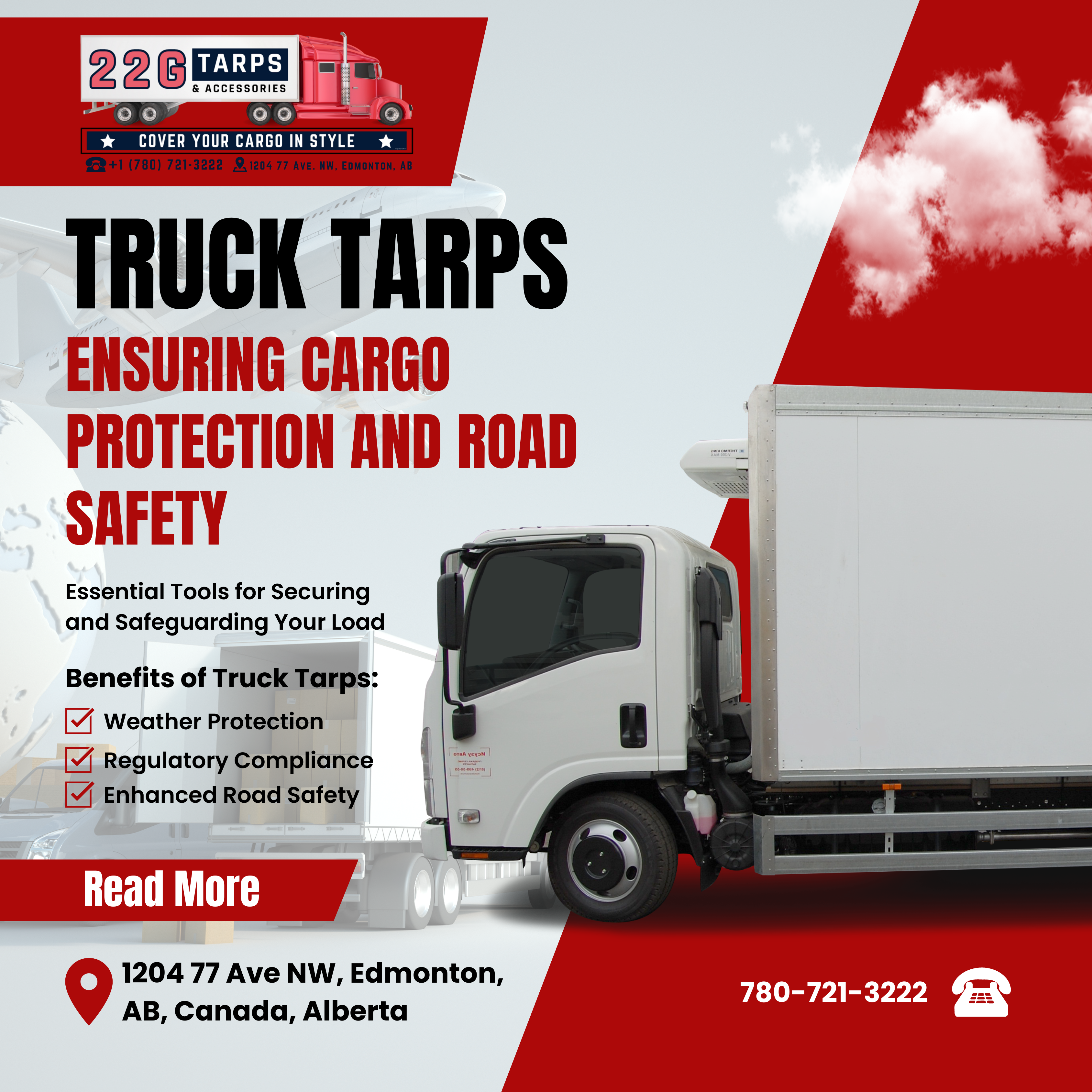
Truck Traps Canada: Ensuring Cargo Protection and Road Safety: Truck Traps, also known as load covers or cargo tarps, are heavy-duty covers used to protect cargo during transportation. These tarps are made of durable materials such as vinyl, mesh, or canvas and are designed to withstand harsh weather conditions and protect cargo from damage.
Proper load securement is critical to ensuring the safety of drivers, other motorists, and pedestrians on the road. A load that is not properly secured can shift or fall off the truck, causing accidents, injuries, and even fatalities. In addition, cargo that is not properly protected can be damaged or lost during transportation, resulting in financial losses for both the shipper and the carrier.
Benefits of Tarping Your Load:
A. Protection from Weather Elements
Truck tarps are designed to protect cargo from a range of weather conditions, including rain, snow, wind, and extreme temperatures. By covering the load, the tarp prevents moisture and other environmental factors from damaging the cargo. Tarps also help to prevent debris from flying onto the cargo during transportation.
Cargo that is not properly protected by a truck tarp can be damaged by weather conditions. For example, if a load is exposed to heavy rain or snow, the cargo can become waterlogged, causing damage or even mold growth. Extreme temperatures can also cause damage to sensitive cargo, such as electronics or perishable goods.
The cost of repairing or replacing damaged cargo can be significant, particularly for high-value items. In addition to the cost of the damaged cargo itself, there may be additional costs associated with shipping delays and lost business opportunities.
B. Compliance with Regulations
State and federal regulations require that all loads be properly secured during transportation to prevent accidents and protect the safety of drivers and other motorists. These regulations provide specific guidelines for load securement, including the use of truck tarps to protect the cargo.
Many states require the use of truck tarps for specific types of cargo, such as loose materials like sand or gravel. In addition, federal regulations require that loads be secured with tarps that are of sufficient size and strength to prevent the cargo from becoming dislodged during transportation.
C. Increased Safety
Using truck tarps can increase safety on the road by preventing cargo from shifting or falling off the truck during transportation. This helps to protect the driver, other motorists, and pedestrians from accidents caused by flying debris or sudden cargo shifts.
Accidents caused by improperly secured loads can be devastating. In some cases, flying debris can cause serious injuries or fatalities. In addition, cargo that falls off a truck can cause traffic delays, property damage, and environmental hazards.
D. Cost Savings
Using truck tarps can save carriers money in the long run by reducing the risk of cargo damage or loss. The costs associated with damaged cargo can be significant, particularly for high-value items. In addition to the cost of the damaged cargo itself, there may be additional costs associated with shipping delays and lost business opportunities. Carriers may also face legal issues or fines for failing to comply with load securement regulations.
Proper Use of Truck Tarps:
Properly securing a load with a truck tarp is essential for protecting cargo, complying with regulations, and ensuring safety on the road. However, it’s important to use truck tarps correctly to avoid common mistakes that can compromise the security of the load. Here are some tips for proper use of truck tarps:
A. Step-by-step instructions for properly securing a load with a truck tarps
- Prepare the load: Before you begin tarping, make sure the load is properly secured and any loose items are removed or secured. The load should be evenly distributed and within weight limits.
- Select the right tarp: Choose a tarp that fits the size and shape of the load and is designed for the type of truck being used.
- Position the tarp: Place the tarp over the load and position it so that it hangs evenly on all sides. Make sure the tarp is centered and that any excess material is evenly distributed.
- Secure the tarp: Begin by attaching the tarp to the front of the truck, then work your way to the back.
- Check the tarp: After securing the tarp, inspect it to make sure there are no gaps or loose areas. If necessary, adjust the tension or reposition the tarp to ensure a secure fit.
B. Tips for avoiding common mistakes
- Avoid placing the tarp too far forward or too far back on the truck, as this can cause the tarp to shift or come loose during transport.
- Adequate tension and securing of truck tarps: Use enough tension to keep the tarp in place, but not so much that it causes damage to the load or the tarp itself. Check the tension periodically during transport and make adjustments as needed.
- Regular inspection and maintenance of truck tarps: Inspect the tarp regularly for signs of wear or damage, such as holes, tears, or fraying. Repair or replace damaged tarps as soon as possible to ensure the continued safety and security of the load.
Explore Further
Truck tarps are an essential tool for securing loads and protecting cargo during transportation. They offer many benefits, including protection from weather elements, compliance with regulations, increased safety, and cost savings.



